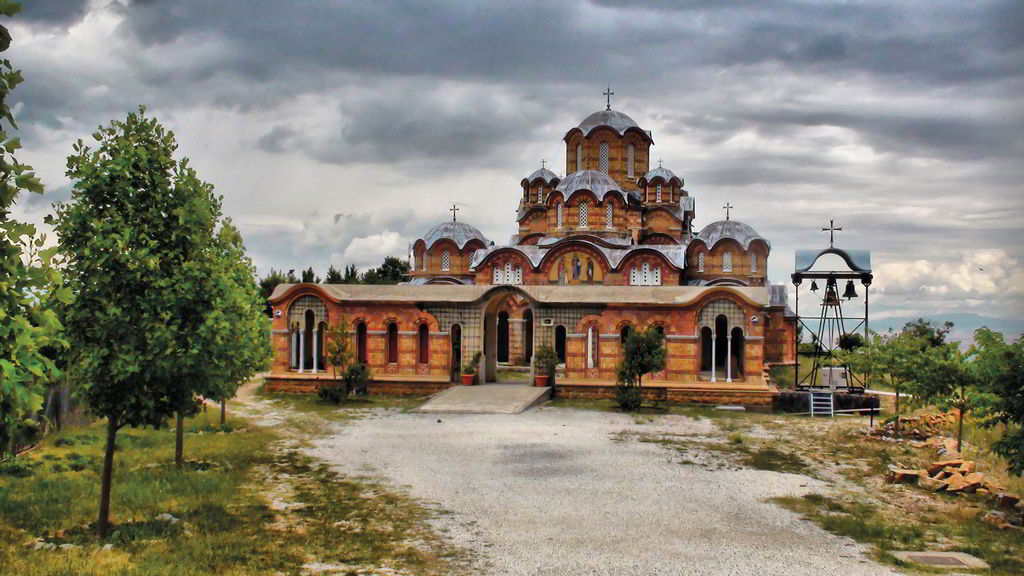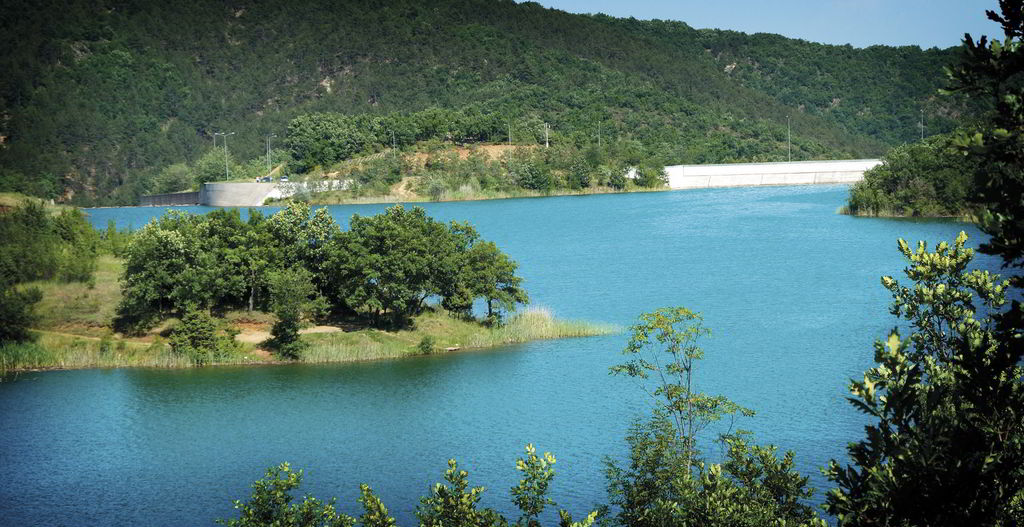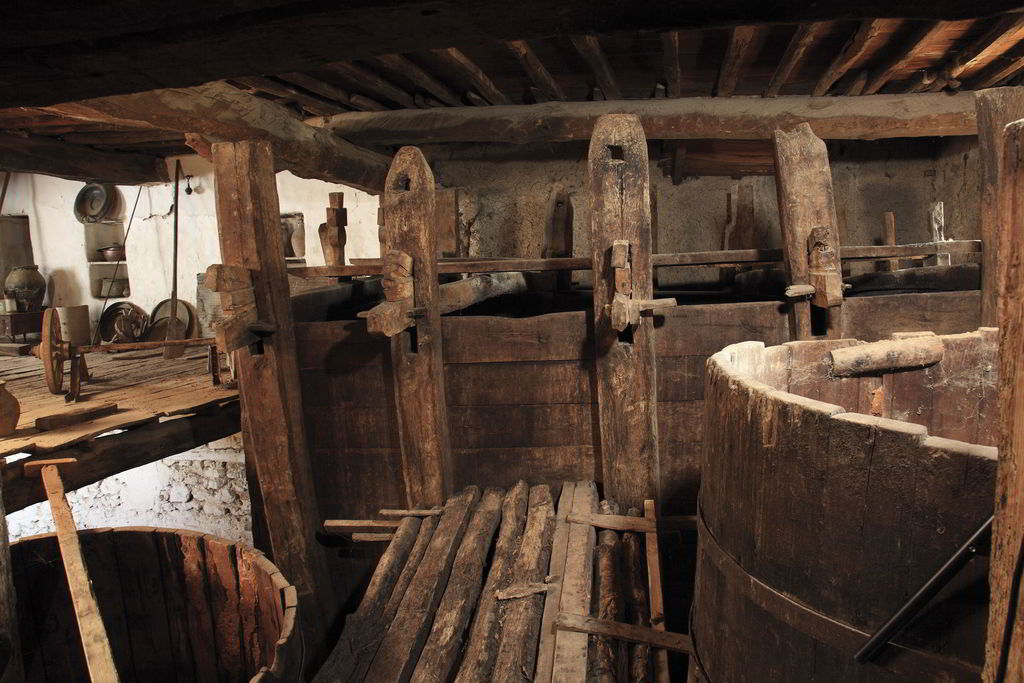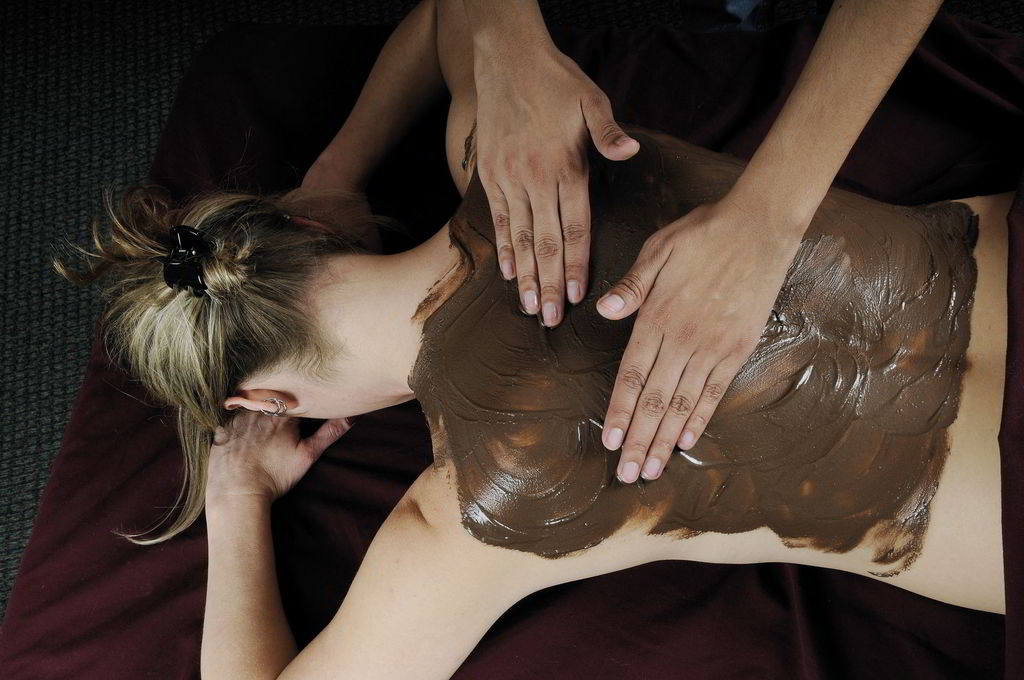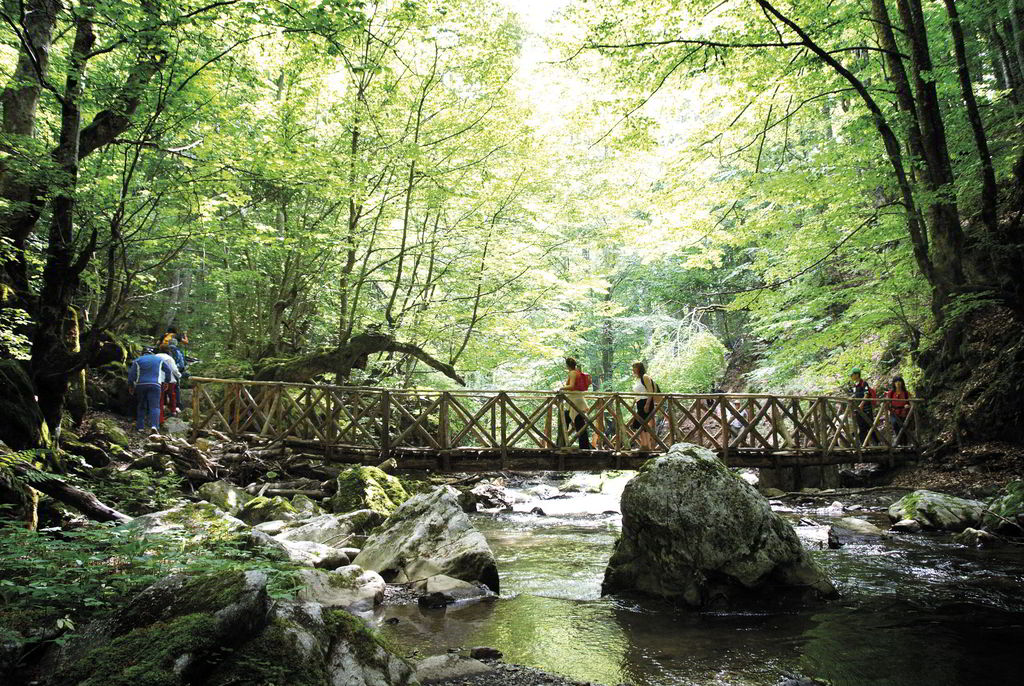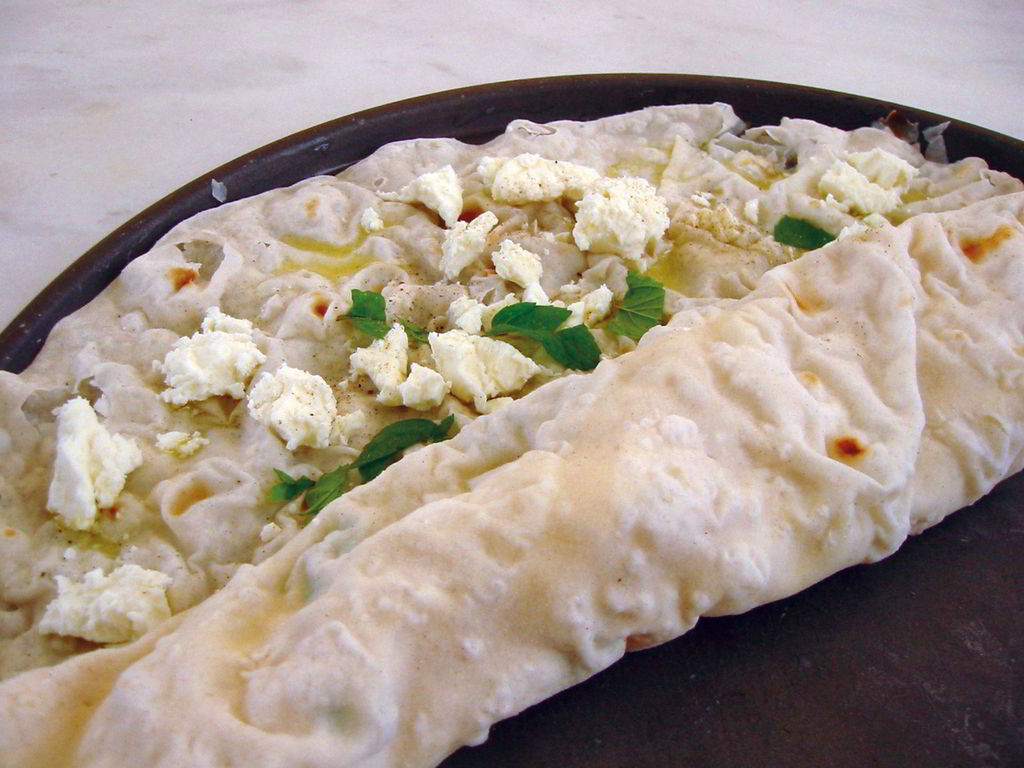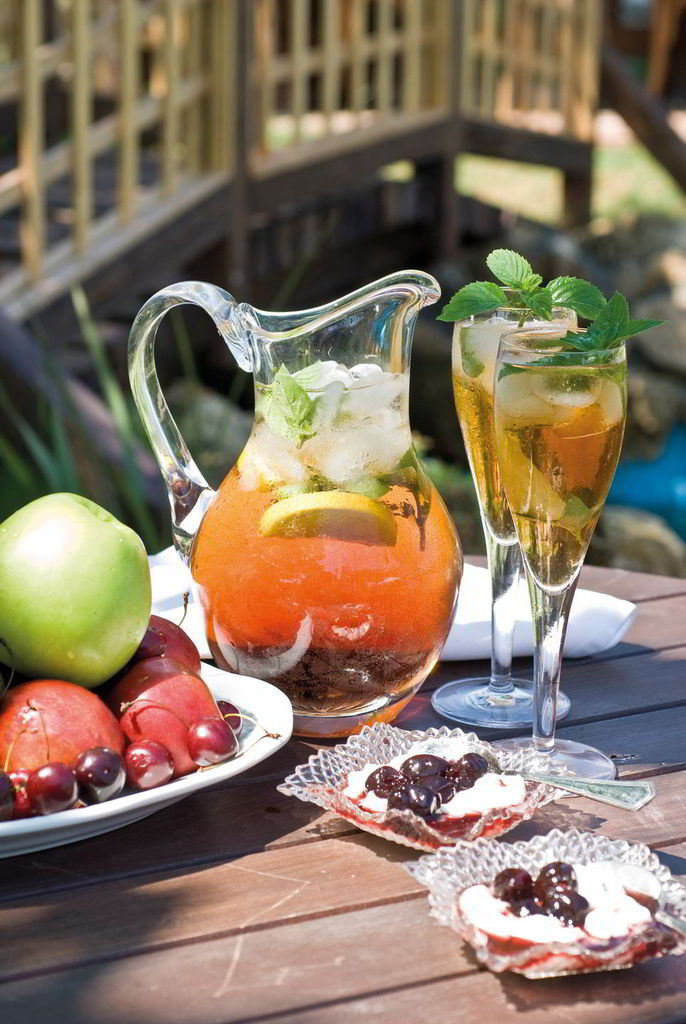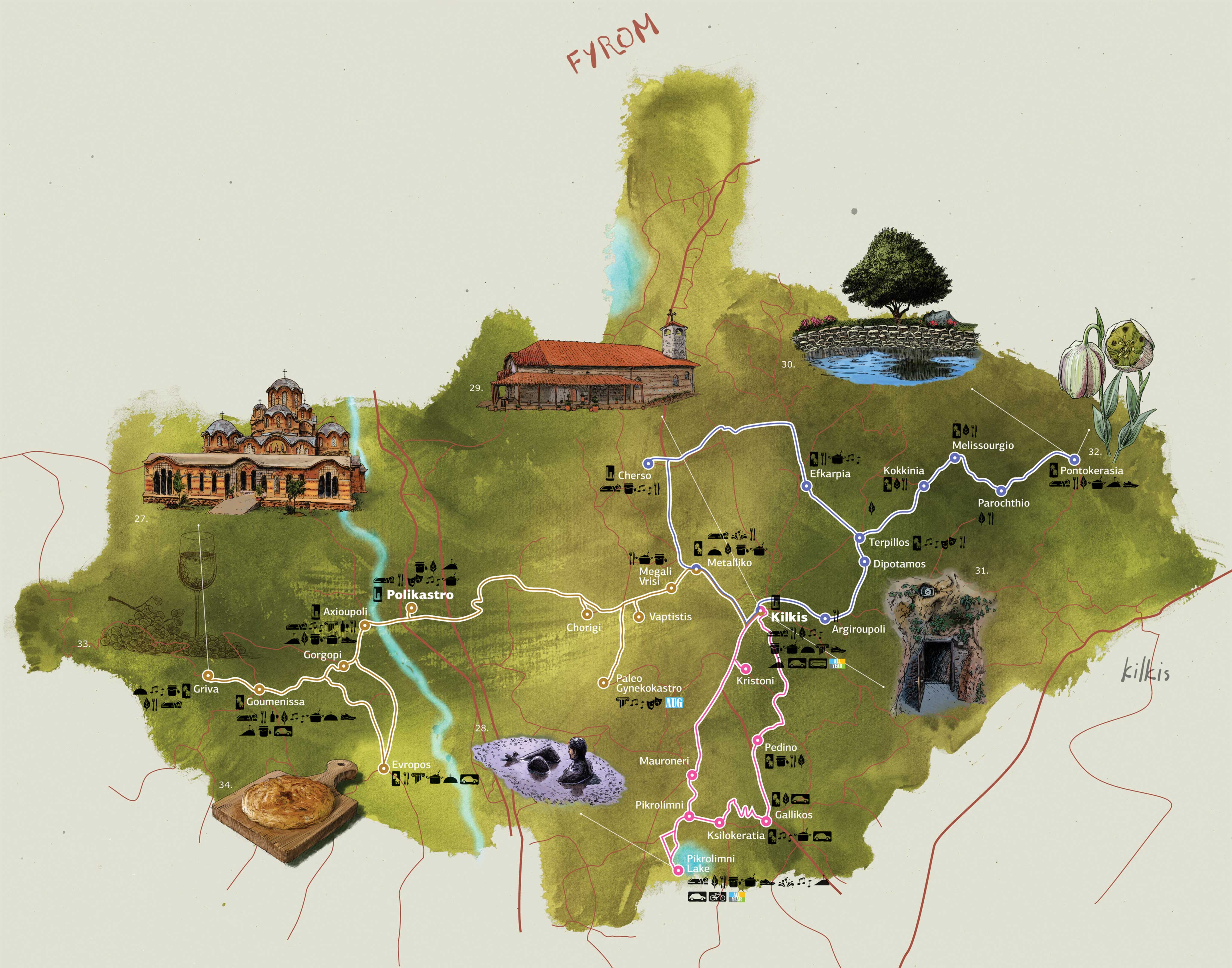



- Route 1
- Route 2
- Route 3
- Route 4
- Route 5
- Route 6
- Route 7
- Route 8
- Route 9
- Route 10
- Road
- Region Boundaries
- Accommodation
- Gastronomic Centre Restaurants-Taverns
- Winemakers
- Campsite
- Thermal springs & Spa Centres
- City
- Village
- History and Culture
- Folklore Cultural Events
- Country
- Sports & Recreation
- Ski resorts
- Tour guide needed
- Archaeological Sites & Monuments
- Natural Environment
- Church
- Female Cooperatives
- Plants local delicacies
- Local Products & Recipes
- By Foot
- By Car
- By Bicycle
- By Bus
- Port
- Railway Station
- Airport
- Seniors
- Families
- Youth
- The whole year
- Best Month
- Best Season
At the north borders of Greece, in the heart of Macedonia, you will find the best Greece has to offer, gathered within
a single place, Kilkis.
Awaken your senses with the colors and scents of nature in the mountains, lakes and rivers of the region. Make a stop at the famous wineries to taste wines and tsipouro at the place of their production and meet the locals who produce them with care. Look for the traditional products and the unique flavors of the culinary tradition of refugees from the region of Pontus. Follow the fine lines of history and tradition in archaeological sites, folklore museums and cultural events. Light a candle in the pious and serene atmosphere of monasteries and churches. Experience the adventure or just take some time to relax physically and mentally. The nature and the locals will make sure to give you a warm welcome letting you discover Kilkis and promise that you will experience a truly memorable experience.
Really, could you miss that?
ROUTES
Awakening the senses
KilkisDream-like Flavours
We begin our journey from the northern borders of Greece, the city of Kilkis and capital of the prefecture, built at the foot of the hill of Agios Georgios where the post-Byzantine Monastery (1830), named after the Saint, is located. Going down the hill we encounter the two-storey Cave with its coral formations, which together with its medicinal properties for diseases of the respiratory system, is ranked as one of the top caves worldwide. Rare findings from the Cave, including fossilized bones and teeth which date back to the last Ice Age, are on display in the Exhibition of Paleontology on the hill of Agios Georgios.
At the foot of the hill, we arrive at the Archaeological Museum where we can view its unique findings such as the Kouros of ancient Evropou (6th century BC), which the only one ever discovered in North Greece so far, the four monumental statues from the archaeological site of Palatianos and a variety of ceramics dating back to the early Iron Age.
Our walk at the pedestrian city zone is full of aromas coming from restaurants, taverns and ouzeri. There you can taste famous and nationally certified (PDO) local wines and dairy products such as ‘feta’ cheese, ‘manouri’ cheese etc.
The cheese-making tradition has been enriched with techniques used by the refugees of Pontus which offer us today the opportunity to taste ‘gais’ cheese, ‘paskitan’, ‘tsiolakik’ etc.
Not far away from the city of Kilkis, on the way to the west, we pass by the picturesque village Metalliko, well-known for its therapeutic mineral (sour) water spouting from its fountains. Directly afterwards, we come across the village Megali Vrisi where we can taste the local cuisine which is highly multicultural featuring exceptional products and flavors.
Having crossed the village Vaptistis, we drive to the Old Ginekokastro where the main parts of the 13th century Byzantine castle are still maintained. It is worth attending the four-day festival of “Ginekokastria” that takes place in the first ten days of August annually.
The next stop in our culinary tour is the city of Polikastro, a significant travelling spot, known for its remarkable market, lodgings and restaurants. The festival of “Polikastrina”, a ten-day event that takes place during Holy Spirit holidays (lasts3 days and is celebrated 50 days after Easter), is the most important
cultural event.
Continuing at the west bank of the river Axios, we encounter a modern small town, called Axioupoli with its magnificent Natural History Museum. In a 3-km distance, we come across the mouth of the river Mega Rema (Koca Dere), an idyllic location, ideal for fishing, leisure and good food. It is worth travelling a little further to see the beautiful artificial lake known as “Limni Metalliou” (Mine Lake).
The road drives us to the picturesque town of Goumenissa. Built on the eastern slopes of the beautiful mountain of Paiko, it still retains its traditional features. It is a well-known wine-making spot producing famous wines.
The images of its narrow paths and old traditional houses enhanced by the presence of water, add to the charm and the uniqueness of the landscape and hospitality of its inhabitants.
Here, as in Axioupoli, winemakers will guide us to their facilities and will familiarize us with the art of wine tasting. It is worth making a stop at the central square of the city surrounded by plane trees and a beautiful fountain, built by French soldiers in the First World War, to enjoy the local tsipouro and delicacies. The ancient Church of Panagia Goumenissa bearing the holy icon and the “Alevras Folklore Museum” are also recommended for a visit.
An exceptional role in the wine life of Goumenisa plays the annual festival of Saint Triphon, the patron-saint of wine-making. During that festival the famous “Kurbani” takes place which Post-Byzantine churches spread all over the region of Kilkis will impress you with their architectural features. They will bring you closer to divinity thanks to the piety of their atmosphere but will also offer you moments of spiritual uplifting, joy and mirth due to various festivals organized in honor of the Saints is accompanied with plenty of local wine, beef stew and, of course, the music of the famous brass bands “Chalkina of Goumenissa”. The village of Griva with its special architecture is the next stop in our culinary experience, known for its local festival “Chestnut - Wine - Cheese” every last Sunday of October and for its traditional desserts. Here the famous Monastery of Saints Raphael, Nikolaos and Irene, carved in the slopes of the mountain of Paiko, is an exceptional site.
We return back to the way to Goumenisa which leads to Evropos, a significant archaeological site of the area, with findings from the prehistoric era, particularly known for the famous archaic statue of Kouros (650 BC). Here we can taste the dish ‘ntolmadakia Evropou’. Our culinary journey ends back at the city of Kilkis. We are left with the feeling that this land and all its special features calls us to visit, to explore, to discover and to take in its colors, its sounds, its enchantment, its scents...
Enticed in the pleasures of life
We begin our journey from the northern borders of Greece, the city of Kilkis and capital of the prefecture, built at the foot of the hill of Agios Georgios where the post-Byzantine Monastery (1830), named after the Saint, is located. Going down the hill we encounter the two-storey Cave with its coral formations, which together with its medicinal properties against diseases of the respiratory system, is ranked as one of the top caves worldwide. Rare findings from the Cave, including fossilized bones and teeth which date back to the last Ice Age, are on display in the Exhibition of Paleontology on the hill of Agios Georgios.
At the foot of the hill, we arrive at the Archaeological Museum where we can view its unique findings such as the Kouros of ancient Evropou (6th century BC), which the only one ever discovered in Northern Greece so far, the four monumental statues from the archaeological site of Palatianos and a variety of ceramics dating back to the early Iron Age.
Our walk at the pedestrian city zone is full of aromas coming from restaurants, taverns and ouzeri. There you can taste famous and nationally certified (PDO) local wines and dairy products such as ‘feta’ cheese, ‘manouri’ cheese etc.
The cheese-making tradition has been enriched with techniques used by the refugees of Pontus which offer us today the opportunity to taste ‘gais’ cheese, ‘paskitan’, ‘tsiolakik’ etc.
Continuing to the south of the prefecture we pass by Kristoni and Mavroneri which lead us to the villages of Pikrolimni and Xilokeratia. In this area, every December the 4th, the custom of “Barbara” is celebrated. This originates from Thrace, from the area 40 Churches of Vizye in Eastern Thrace, which has its roots back to the ancient years and celebrates ancient beliefs in ‘panspermia’. The night before the event, housewives boil wheat with cinnamon, walnuts, figs and other ingredients and stir it until it turns into a thick batter. On the 4th of December they place serve this thick batter (“Barbara”) in a deep plate and they have to deliver it to at least 3 houses. In this way, they make a wish for a good harvest season.
Leaving Xilokeratia behind, we arrive at Lake Pikrolimni which is a small shallow salt lake.
The composition of the clay at the bottom of the lake, which is full of sulphates and nitrate salts, is known for its cosmetic and medicinal properties worldwide.
The area provides a fully-equipped clay therapy health spa in addition to accommodation and catering facilities all over the year. The local cuisine is extremely multicultural with unique products and flavors.
For fans of cycling, cycling around the lake and its magnificent natural landscape offers a unique experience. In the area, there is a 7,500-acre wildlife reserve which is part of “NATURA 2000”, a conservation network of protected natural sites.
We return to the village Xilokeratia and then to the village Galliko which took its name from the Gallikos River, or else, the ancient river Echedoros.
The name Echedoros stems from the phrase «he who is gifted (echo dora)» owing to the golden sand of its river banks.
The area surrounding the river is a haven for various species of birds as large flocks of flamingos and other rare and endangered species can be seen.
Just before the end of the route we go through the village Pedino, the Thracian village of Kilkis where someone can find traditional pasta and pastries.
Our journey ends at the city of Kilkis, filling us with images and giving us no choice but fulfill the promise of returning once again to the magic, the unique images and intoxicating aromas of this land ...
Awakening the senses
We begin our journey from the northern borders of Greece, the city of Kilkis and capital of the prefecture, built at the foot of the hill of Agios Georgios where the post-Byzantine Monastery (1830), named after the Saint, is located.
Going down the hill we encounter the two-storey Cave with its coral formations, which together with its medicinal properties for diseases of the respiratory system, is ranked as one of the top caves worldwide. Rare findings from the Cave, including fossilized bones and teeth which date back to the last Ice Age, are on display in the Exhibition of Paleontology on the hill of Agios Georgios.
At the foot of the hill, we arrive at the Archaeological Museum where we can view its unique findings such as the Kouros of ancient Evropou (6th century BC), which the only one ever discovered in North Greece so far, the four monumental statues from the archaeological site of Palatianos and a variety of ceramics dating back to the early Iron Age.
Our walk at the pedestrian city zone is full of aromas coming from restaurants, taverns and ouzeri. There you can taste famous and nationally certified (PDO) local wines and dairy products such as ‘feta’ cheese, ‘manouri’ cheese etc. The cheese-making tradition has been enriched with techniques used by the refugees of Pontus which offer us today the opportunity to taste ‘gais’ cheese, ‘paskitan’, ‘tsiolakik’ etc.
We continue our journey to the villages of the mountain range of Krousia, the northeast part of Kilkis. Leaving back the villages Argiroupoli and Dipotamo, we arrive at Terpillos, the former center of the municipality of Krousia. In the area, the festival of Saint Panteleimon on July the 27th is very famous. Also, on January the 8th, the custom of “Babo” or “Midwife” (women feast while men stay at home etc.) is celebrated with great honour.
Within walking distance from the village, we come across Agiasma, a picturesque and idyllic location. We continue our journey to the villages Kokkinia and Melissourgio. This is a pleasant and relaxing route, a unique experience for nature lovers. The cafes of the area function as taverns and restaurants as well, as it is accustomed in every small village.
The hospitality of the people here with origins from the Pontus area will undoubtedly be rewarding.
A unique rest point is the village Parochthio, built on the hillsides of the mountain range Kroussia, literally embedded in lush green. A coffee at the traditional cafes is a must-do.
A few kilometers away from the village of Parochthio, in the middle of our way to Pontokerasia, we encounter a museum of living nature, the well-known Balkan Botanic Garden of Krousia. For nature lovers, this is a really good alternative amidst the idyllic landscape.
Long-living plane trees, ash trees, green oak trees and tall beech trees coexist in harmony with hundreds of endemic plants of the Balkans blossoming all year round and reaching their climax in spring.
Let’s discover them through different itineraries of sightseeing in rocky gardens, silver-colored pharmaceutical and aromatic gardens, waterfalls, ponds, streams, artificial paths, natural grasslands and woodlands.
After this wonderful break, we arrive at the village of Pontokerasia, also known as Old ‘Paprat’ or the village where ferns grow. It is located at the highest point of the mountain Krousia, at the peak called Mavrovouni, surrounded by woods rich in flora.
Let’s enjoy nature through strolls or through other activities, such as horse riding, cycling and paragliding. In the settlement, there is an ecotourism facility that can offer us, apart from accommodation services, experiences of great action and entertainment in the amusement park.
Local delicacies are another asset of the place. Here you can taste special salads made with arugula or spinach. Also, you can try many local dishes like boar or cooked deer or ‘tigania’ that is, fried pork slices, accompanied by the finest regional wines.
Leaving behind the village of Pontokerasia, we follow the way back to Terpillos in order to reach Efkarpia, a central village which is widely known for its good food in the picturesque taverns.
The last stop of our route is the village of Cherso, the old capital of the municipality and the commercial center of the region. Here you can find any kind of services, taverns, restaurants and cafes. Having seen vegetable gardens glimmering in the sun and having tasted the famous cuisine of Pontus full of aromas, we can now return to our starting point, Kilkis ...
